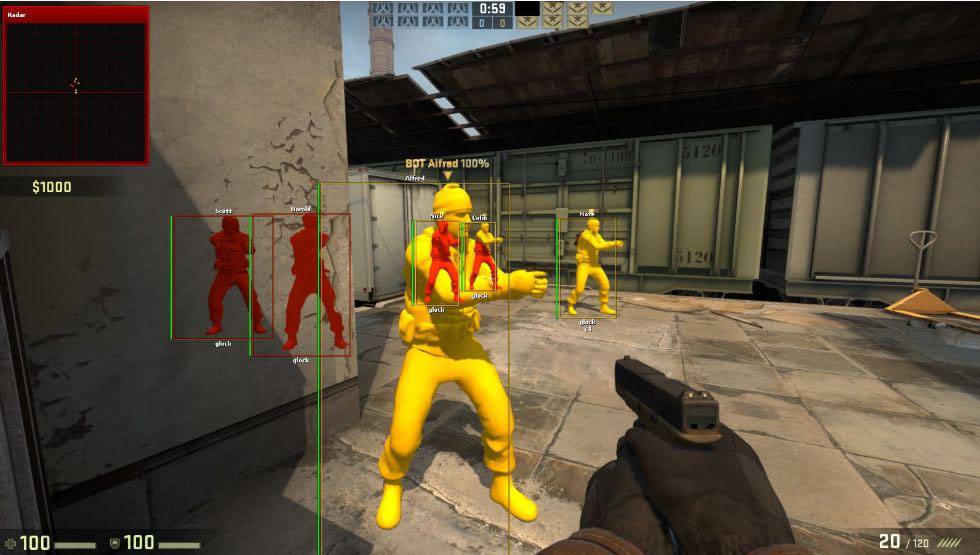Introduction: The Origins of Cheating in Video Games
Cheating in video games has existed almost as long as video games themselves. What started as simple hacks has evolved into a complex arms race between cheaters and game developers, with increasingly sophisticated methods being employed. This story of cheating in video games reflects broader changes in technology, culture, and the gaming industry itself.
The Early Days: Simple Hacks and Cheat Codes
In the early days of video gaming, cheats were often built into the games themselves. Developers included cheat codes as a way to test their games or as Easter eggs for players to discover. For example, the famous Konami Code (↑ ↑ ↓ ↓ ← → ← → B A) became a cultural icon, allowing players to unlock special abilities in games like Contra.
As gaming moved from arcades to home consoles and PCs, players discovered new ways to manipulate games. Early cheats often involved simple hacks—modifying game files or using hex editors to change values in a game’s code. These methods required some technical know-how but were relatively easy to perform on the less complex systems of the time.

The Rise of Internal Cheats: Exploiting Game Engines
As games became more complex, so did the methods of cheating. Internal cheats emerged as a more sophisticated way to manipulate games. These cheats involved injecting code directly into a game’s process, allowing cheaters to modify the game in real-time. For example, in PC games like Doom or Quake, players could use internal cheats to enable “God mode” or access hidden levels.
Internal cheats became more prevalent with the rise of multiplayer gaming. In games like Counter-Strike, cheaters used internal hacks to gain unfair advantages, such as wallhacks or aimbots. These cheats directly modified the game’s memory, making them powerful but also easier to detect by anti-cheat software.
External Cheats: The Era of Third-Party Software
As anti-cheat systems evolved, cheaters developed new methods to avoid detection. External cheats became popular because they operated outside of the game’s process. Instead of injecting code directly into the game, external cheats used third-party software to manipulate the game from the outside.
A common external cheat is the aimbot, which reads the game’s memory to automatically adjust the player’s aim. Unlike internal cheats, external cheats are harder to detect because they don’t modify the game’s code directly. Games like Fortnite and PUBG have seen a rise in external cheats, prompting developers to continuously update their anti-cheat measures.
The Modern Era: DMA-Based Cheats and Hardware Exploits
In the most recent chapter of video game cheating, DMA-based cheats (Direct Memory Access) have emerged as one of the most sophisticated methods. These cheats involve accessing the game’s memory through specialized hardware, bypassing the operating system and anti-cheat software entirely.
DMA-based cheats are particularly effective in competitive games like Call of Duty: Warzone, where even a small advantage can have a significant impact. By using hardware like PCIe cards to read and manipulate memory directly, cheaters can gain real-time information about other players or automate certain actions without triggering traditional anti-cheat defenses.

The Arms Race: Cheaters vs. Developers
The battle between cheaters and game developers is ongoing. As cheats become more sophisticated, so do the anti-cheat systems designed to combat them. Today, game developers use a combination of software-based solutions, like machine learning algorithms, and hardware-based approaches, like Trusted Platform Modules (TPMs), to detect and prevent cheating.
But the story is far from over. As technology continues to advance, new methods of cheating will undoubtedly emerge. Whether through advancements in AI, cloud computing, or other technologies, the future of cheating in video games will be shaped by the ongoing arms race between those who seek to cheat and those who strive to maintain fair play.
Conclusion: The Ongoing Legacy of Cheating in Video Games
Cheating in video games has evolved from simple cheat codes and hacks to complex, hardware-based exploits. This evolution mirrors the growth of the gaming industry itself, reflecting changes in technology, player behavior, and the global gaming community. Understanding the history and methods of cheating helps us appreciate the challenges that game developers face in preserving the integrity of their games.
While cheating will likely always be a part of video gaming, the commitment to fair play and the continuous development of anti-cheat measures ensure that the majority of players can enjoy games as they were meant to be played.

